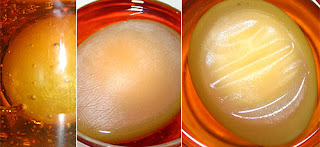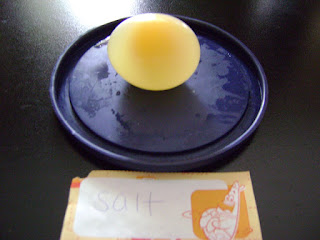Membranes are vital because they separate the cell from the outside world. They also separate compartments inside the cell to protect important processes and events.
Cellular membranes have diverse functions in the different regions and organelles of a cell. However, at the electron microscopic level, they share a common structure following routine preparative steps. The above figure shows the typical "Unit" membrane which resembles a railroad track with two dense lines separated by a clear space. This figure actually shows two adjacent plasma membranes, both of which have the "unit membrane" structure. You can best see protein distribution via a technique called freeze fracture/freeze etch. The freeze-fracture/freeze etch technique starts with rapid freezing of a cell. Then the frozen cells are cleaved along a fracture plane. This fracture plane is inbetween the leaflets of the lipid bilayer , as shown by this cartoon. The two fractured sections are then coated with heavy metal (etched) and a replica is made of their surfaces. This replica is then viewed in an electron microscope. One sees homogeneous regions where there was only the exposed lipid leaflet.
In certain areas of the cell, one also sees protrusions or bumps. These are colored red in the cartoon. Sometimes one can see structure within the bumps themselves. These are the transmembrane proteins.
The following illustration will show you a freeze-fracture/freeze etch view. The organization or structure of the transmembrane proteins can often be visualized.
Cellular membranes have diverse functions in the different regions and organelles of a cell. However, at the electron microscopic level, they share a common structure following routine preparative steps. The above figure shows the typical "Unit" membrane which resembles a railroad track with two dense lines separated by a clear space. This figure actually shows two adjacent plasma membranes, both of which have the "unit membrane" structure. You can best see protein distribution via a technique called freeze fracture/freeze etch. The freeze-fracture/freeze etch technique starts with rapid freezing of a cell. Then the frozen cells are cleaved along a fracture plane. This fracture plane is inbetween the leaflets of the lipid bilayer , as shown by this cartoon. The two fractured sections are then coated with heavy metal (etched) and a replica is made of their surfaces. This replica is then viewed in an electron microscope. One sees homogeneous regions where there was only the exposed lipid leaflet.
In certain areas of the cell, one also sees protrusions or bumps. These are colored red in the cartoon. Sometimes one can see structure within the bumps themselves. These are the transmembrane proteins.
The following illustration will show you a freeze-fracture/freeze etch view. The organization or structure of the transmembrane proteins can often be visualized.






























